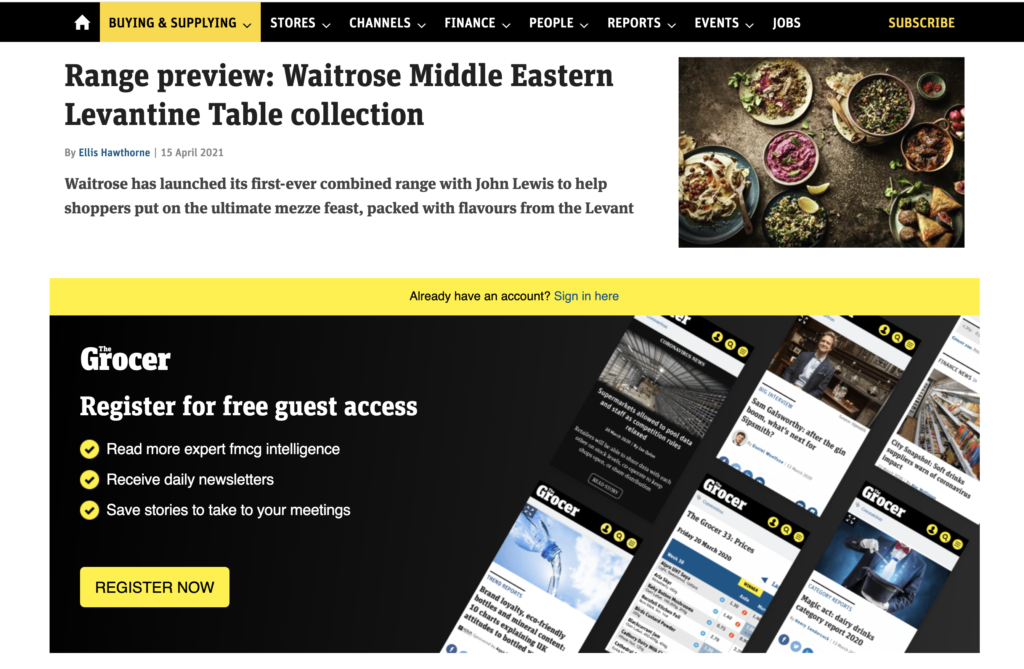Decided to set up a metered digital paywall for your B2B publication but don’t know where to start? John Barnes, Chief Digital Officer at William Reed Business Media led a round table discussion on digital paywalls and several publisher MDs shared their experiences. These were our conclusions.
1. Your business model in print affects your paywall approach
Many B2B publishers suspended print during the covid crisis and moved to digital paywalls. Titles already based on paid subscriptions can make an easier transition to digital paywalls. But those reliant on newsstand didn’t know who their readers were. Titles that were previously controlled circulation and ad funded already know who their readers are. Better to introduce a digital registration wall but make it very clear there are no plans to charge for content.
2. Experiment with your meter allowances in each market
A typical set up is to allow one or two article views completely free and unregistered, then require registration to view another 4-5 articles in 30 days, then readers hit the paywall. It’s worth testing out all these variables – number of free and registered articles and the period of time before a meter allowance is refreshed. Many users will never reach your paywall, so you may want to gradually reduce the metered allowance to ensure more get stopped at the wall.
3. Decide what goes behind reg and pay walls
Some content, such as downloadable resources, you might want to always keep behind the registration wall. And other content, such as news, commercially sponsored content or podcasts, you may choose to keep completely free and unrestricted. It’s good practice to have a clear table of what goes in each category. Some platforms still serve ads to pages where content is blocked by a paywall, others don’t.
4. Offer different meters to distinct audience segments
International audiences may behave differently. For example, US audiences are used to meters, so you can set it quite tight. But Asian audiences may be more wary, so you could be more lax with their paywall. Some publishers allow readers arriving via social or search one or two articles before the registration wall kicks in.
5. Target audience segments by behaviour or content
A more sophisticated approach is to track what readers are viewing. If a particular content category has strong ad revenues, you may want to allow a lax meter for the segment that show interest in that content. With an analytics package you can score readers based on the number of articles they have viewed or the frequency with which they return and tighten the meter on keen readers who could convert to subscribers.
6. Enterprise subs an opportunity in B2B publishing
Metered paywall platforms may not always offer the opportunity to sell enterprise subscriptions, but these are worth testing out even with a manual approach. The FT identify an individual subscriber, then ask them if colleagues would be interested in an upgrade to say a group subscription of five, and then upsell again. Some publishers bundle digital content subs and conference passes in their enterprise subscriptions.
Academic publishing platforms are good at making it easy for staff (or students) whose employing organisation has bought a group subscription, even to the point of allowing people to sign in without a password on a device that was previously in an IP range when they are “off campus.” Open Athens is one access system that does this and is available to non-academic publishers.
7. Choosing a tech platform
There are several third party platforms to manage access and entitlement. The group discussed Piano, Zephr, Abacus and Affino. Larger publishers sometimes develop an in-house system where they have their own tech resources. Some are designed for publishers who still have a print subscriptions business, such as Abacus Advance. Zephr is digital paywall only and has good features but requires the publisher to have good in-house tech knowledge. Piano makes it easy for marketers to create specific audience segments. Affino has a CRM tool built in for enterprise subs.
This round table was set up with members of the Speciall Media Group, an online community of 120 MDs, publishers and directors in independent B2B and B2C businesses. We have an online forum hosted on Guild and run regular virtual round tables on hot topics suggested by the group. It’s free (for now) but invite only – you can request to join here. https://guild.co/groups/742/speciall-media-group
About the author
Carolyn Morgan has bought, sold, launched and grown specialist media businesses across print, digital and live events. A founder of the Specialist Media Show (sold in 2014) she now advises media businesses large and small on their digital strategy through her consultancy Speciall Media.
Find out more about the advice we provide for publishers

